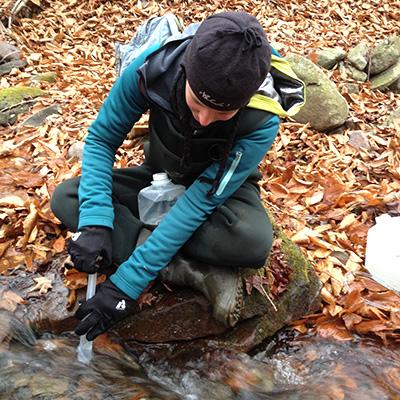How Does Nitrogen Deposition Affect In-Stream Dissolved Organic Nitrogen Processing and Its Role in Regulating Watershed Nitrogen Export?

Human alterations to the global nitrogen cycle have resulted in elevated nitrogen deposition that affects ecosystem dynamics and can result in nitrogen saturation of forest watersheds. Saturation occurs when availability of certain forms of nitrogen exceed demand by plants and microorganisms. Research on the effects of elevated nitrogen deposition in streams has focused on dissolved inorganic nitrogen (DIN) despite the fact that dissolved organic nitrogen (DON) is frequently the dominant form of nitrogen exported from forested watersheds. To better understand factors controlling stream DON uptake and watershed export across the Northern Forest region, NSRC researchers studied six streams across a gradient of ambient and experimentally elevated nitrogen deposition.
In fall 2012, researchers found that DON uptake decreased as DIN availability increased. DOC (dissolved organic carbon) uptake was unrelated to nitrogen availability resulting in the decoupling of DOC and DON uptake. However, this pattern did not occur during the following summer or fall, and researchers conclude that nitrogen demand was high in fall 2012 due to the effects of Superstorm Sandy. When researchers experimentally increased nitrate concentration in a stream while measuring DOC and DON uptake, they found that DON uptake increased and DOC uptake was not affected.
DON uptake can be as high as or higher than nitrate uptake in these streams, and DOC and DON uptake can be decoupled by nitrogen demand and DIN availability. This suggests that headwater streams may play an active role in regulating watershed DON export in the Northern Forest.
